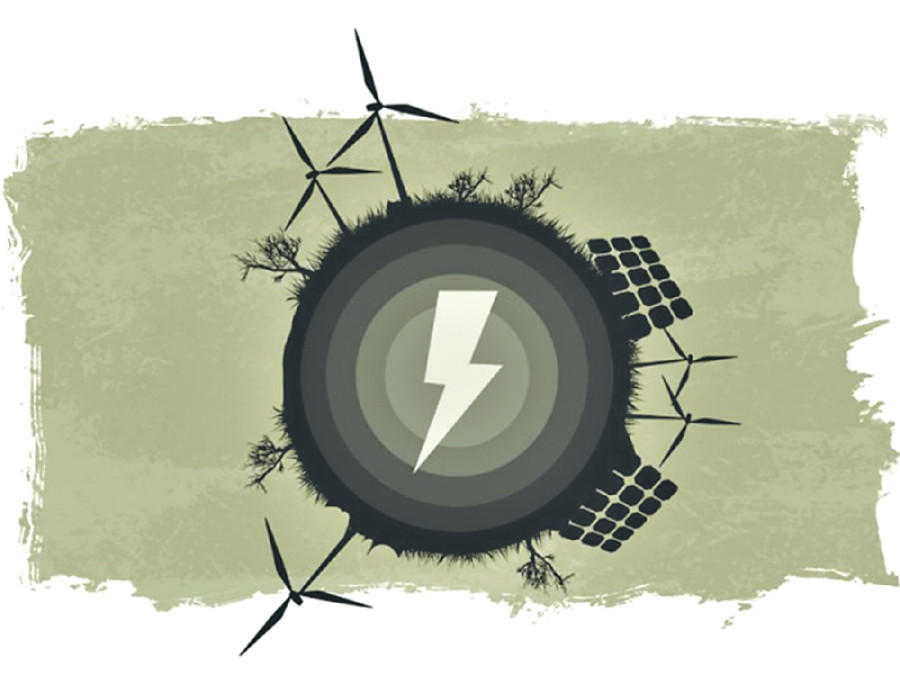Opinion
Time to branch out
Changes in European foreign aid policies are going to affect Nepal’s renewable energy sector
Bibek Raj Kandel
So far in Nepal, the renewable energy sector has mostly been an aid-backed industry, where the Europeans have traditionally played the leading role. For nearly over a decade and half, the sector saw a steep increase in foreign aid support. But this might not be the case anymore. Political and economic changes taking place in Europe are driving the countries to adjust their foreign aid policy, both in size and purpose, to adapt to the new context.
The largest ever renewable energy undertaking of the government of Nepal, initiated in 2012—National Rural and Renewable Energy Programme (NRREP)—is currently supported by multiple donors like the Asian Development Bank, the World Bank and many European partners like Germany, Norway, Denmark and Britain, with as much as 50 percent on-budget support of $170 million coming from these international partners. As a substantial drop in European development assistance to Nepal is expected to take place in the coming years, it will be a new testing time for the renewable energy sector of the country. There already are growing concerns about the impact that will have and the solutions the Nepal government will adopt.
Denmark, Norway, UK
Denmark, a long-time collaborator and a major contributor to the renewable energy sector of Nepal, is already diverting its aid to other countries and to their new priority areas, the recent one being hosting Syrian refugees. Denmark’s draft finance act 2016 proposes as a sharp reduction of 2.6 billion Danish kroner (DKK) on its spending for development cooperation compared to its previous year’s budget of DKK 16.8 billion, including a full withdrawal plan of its development cooperation in Nepal.
Denmark contributes roughly 20 percent of the budget support to the on-going Nepal government’s renewable energy initiative and until recently was the lead donor in the sector. Though the Danish embassy in Kathmandu has been calling the decision to phase out a political one from Copenhagen, this can also be partly understood as another gross foreign policy failure of the Nepal government. It is still unknown if the Nepal government did anything to persuade them to stay. But it is not my intention to explore it here.
Following Denmark’s plan to exit, Norway, another generous partner to renewable energy, became the lead donor for this sector. Its support currently constitutes another 20 percent of the sectoral budget. But here’s something new to worry about. Norway’s support can visibly diminish soon as it has a lot of things to fix on its own soil.
Petroleum accounts for half of Norway’s exports. The oil industry plays a vital role in its economy and in the financing of its public services and foreign assistance. The global downturn in oil prices has created a massive pressure on the Norwegian economy, forcing the country to directly or indirectly reduce its spending on foreign assistance. With the decrease in oil prices, StatOil, a state owned Norwegian Oil Company, reported a massive drop in revenue, revealing its second quarter earnings as $913 million in contrast to $2,883 million in the same period in 2015.
With this drop in revenue and the diversion of a big chunk of its foreign aid money to support Syrian refugees, Norway seems constrained in its ability to offer sufficient resources to its aid receiving countries. While Nepal remained the fourth largest Norwegian aid recipient country in 2015, with the support amounting to 492 million Norwegian kroner, a significant drop in its assistance in the coming years should not be surprising. As the low price oil regime is anticipated to continue for a few more years, Norway’s aid to Nepal and therefore its support to the renewable energy sector in the country can be expected to decline further.
Now, with one big donor leaving the country and another one expected to slash its support heavily, the new situation has invariably created a strange fiscal environment in the heavily donor-backed renewable energy sector.
The first phase of the current renewable energy undertaking of the Nepal government, NRREP, expires in 2017. In the light of these new fiscal constraints, the government of Nepal is now considering to partner with the Department of International Development of the United Kingdom (DFID), which has for long remained one of Nepal’s major donors in the area of energy and climate change. Despite the UK being a generous aid provider and its continuous willingness to support the second phase of the Nepal government’s renewable energy undertaking, the structure and the scale of its support, however, remain uncertain.
No surprise here as well—the dust of Brexit has not yet settled. The new uncertainty that has arisen due to Brexit is already affecting the UK’s aggregate demand, causing the British economy to shrink further. At the same time, the falling exchange rate of the pound could also swing things in an adverse manner. There is no guarantee that Brexit-induced scenarios will not lead DFID to make cuts in its development assistance to Nepal and reduce its ability to support renewables in the country.
Sustained pathway
Development assistance has thus far played a vital role in the development of renewables in the country. Unfortunately, the large asymmetry between high donor funding and extremely low private investment in renewables has hurt the sector at large. Nepal needs to carry out a systematic evaluation of the current growth model to pave new ways to transition from subsidy-driven to more private sector-led technology promotions. While the new renewable energy subsidy policy 2016 has, to some extent, opened some avenues for private sector investment, the harsh reality has been that except for a handful of private sector firms, the majority of those working in the renewable energy sector seem content with the flow of aid.
Unfortunately, access to an easy resource has largely kept them from innovating new business models in the sector. So it is yet to be seen how much leeway the new phase of the government’s renewable energy initiative, when it comes, can catalyse the new breed of energy entrepreneurs less affected by these dramatic policy shifts on foreign soils. It is to be hoped that the recent political changes in the European countries will provide an incentive to bring in more private sector money into the renewable energy sector and persuade the government to seek some home-grown revenue sources.
Kandel is an energy expert and holds a master’s degree in Environmental and Energy Management from University of Twente, Netherlands




 17.12°C Kathmandu
17.12°C Kathmandu











